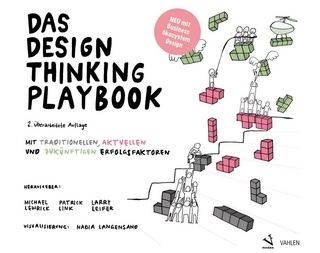
Visualizing Information Using SVG and X3D
Springer London Ltd (Verlag)
978-1-84996-918-5 (ISBN)
Correcting the Great Mistake People often mistake one thing for another. That’s human nature. However, one would expect the leaders in a particular ?eld of endeavour to have superior ab- ities to discriminate among the developments within that ?eld. That is why it is so perplexing that the technology elite – supposedly savvy folk such as software developers, marketers and businessmen – have continually mistaken Web-based graphics for something it is not. The ?rst great graphics technology for the Web,VRML,has been mistaken for something else since its inception. Viewed variously as a game system,a format for architectural walkthroughs,a platform for multi-user chat and an augmentation of reality,VRML may qualify as the least understood invention in the history of inf- mation technology. Perhaps it is so because when VRML was originally introduced it was touted as a tool for putting the shopping malls of the world online,at once prosaic and horrifyingly mundane to those of us who were developing it. Perhaps those ?rst two initials,“VR”,created expectations of sprawling,photorealistic f- tasy landscapes for exploration and play across the Web. Or perhaps the magnitude of the invention was simply too great to be understood at the time by the many, ironically even by those spending the money to underwrite its development. Regardless of the reasons,VRML suffered in the mainstream as it was twisted to meet unintended ends and stretched far beyond its limitations.
Using SVG and X3D in Generic Web Applications.- SVG and X3D in the Context of the XML Family and the Semantic Web.- The Foundations of SVG.- X3D Fundamentals.- SVG as the Visual Interface to Web Services.- X3D Graphics, Java and the Semantic Web.- Distributed User Interfaces: Toward SVG 1.2.- Publishing Paradigms for X3D.- Applying SVG and X3D to Specific Problems.- Visualizing Complex Networks.- Applying SVG to Visualization of Chemical Structures and Reactions.- Using Metadata-based SVG and X3D Graphics in Interactive TV.- Knowledge Visualization Using Dynamic SVG Charts.- Using SVG and XSLT to Display Visually Geo-referenced XML.- Using Adobe Illustrator to Create Complex SVG Illustrations.- X3D-Edit Authoring Tool for Extensible 3D (X3D) Graphics.- Concluding Remarks Vladimir Geroimenko and Chaomei Chen.
| Erscheint lt. Verlag | 13.10.2010 |
|---|---|
| Zusatzinfo | 86 Illustrations, color; 125 Illustrations, black and white; XIV, 298 p. 211 illus., 86 illus. in color. |
| Verlagsort | England |
| Sprache | englisch |
| Maße | 155 x 235 mm |
| Themenwelt | Mathematik / Informatik ► Informatik ► Betriebssysteme / Server |
| Mathematik / Informatik ► Informatik ► Datenbanken | |
| Mathematik / Informatik ► Informatik ► Grafik / Design | |
| Informatik ► Software Entwicklung ► User Interfaces (HCI) | |
| Informatik ► Theorie / Studium ► Künstliche Intelligenz / Robotik | |
| Mathematik / Informatik ► Informatik ► Web / Internet | |
| Informatik ► Weitere Themen ► Hardware | |
| ISBN-10 | 1-84996-918-3 / 1849969183 |
| ISBN-13 | 978-1-84996-918-5 / 9781849969185 |
| Zustand | Neuware |
| Informationen gemäß Produktsicherheitsverordnung (GPSR) | |
| Haben Sie eine Frage zum Produkt? |
aus dem Bereich


